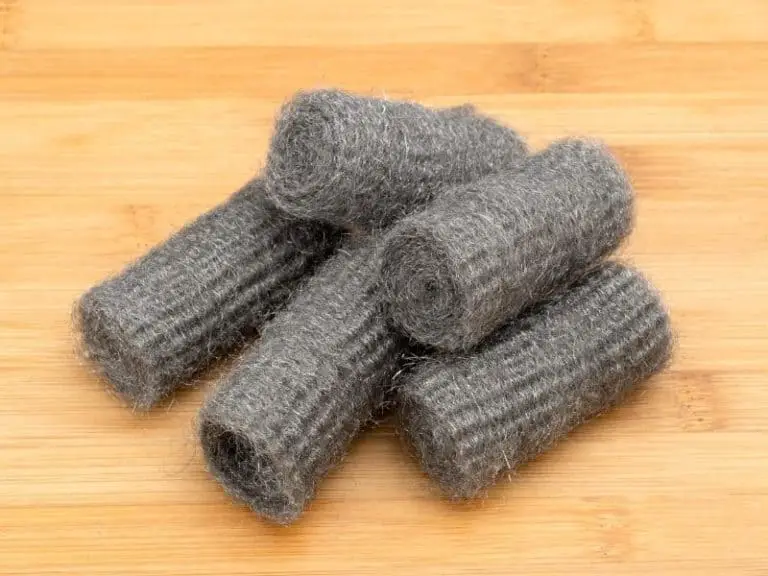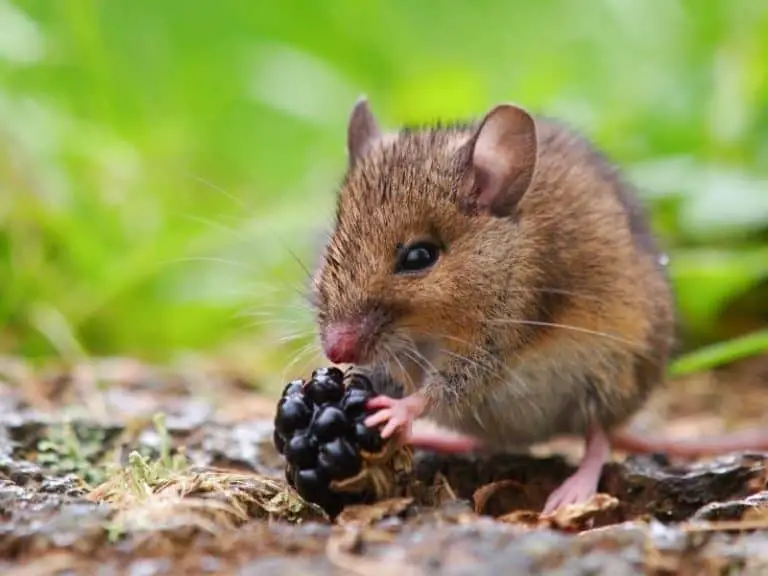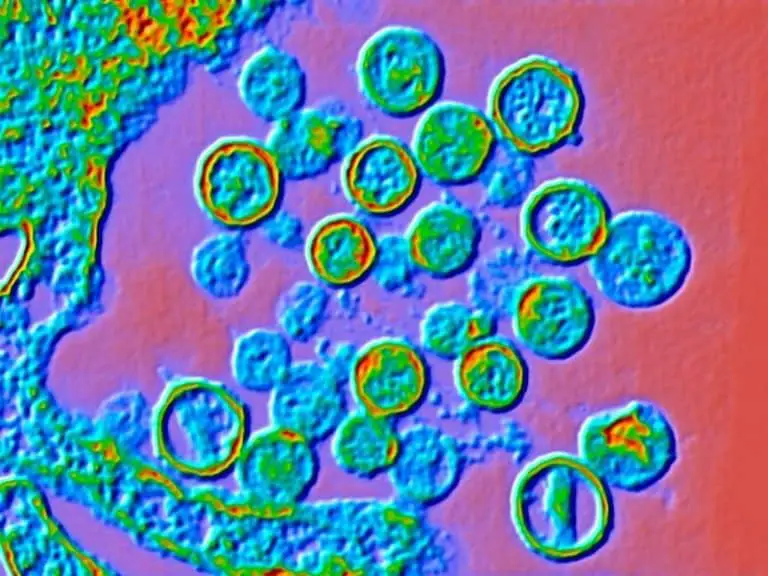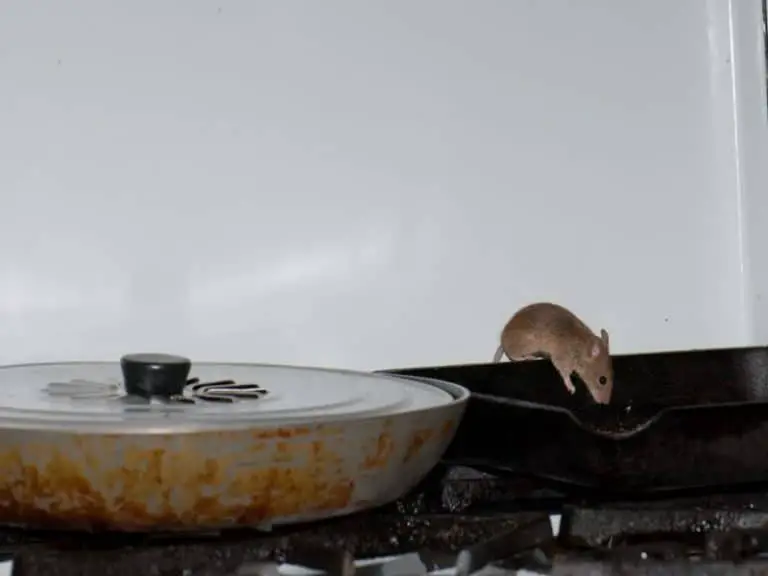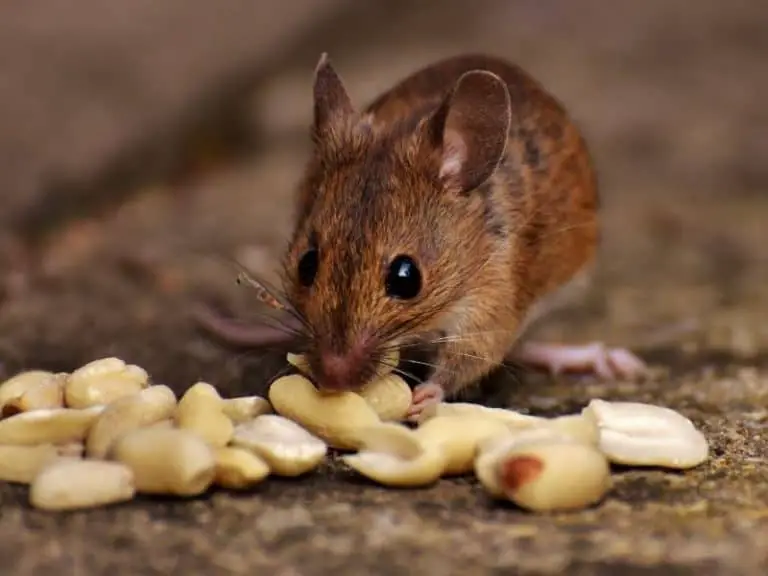Does Rat Poison Kill Mice?
If you are looking for ways to maximize your pest control budget, it will be helpful to know a few things about rat poison and its active ingredients. Whether you are after rats or mice, do the same poisons work for them? Are mouse and rat poison interchangeable?
Rat poisons can kill mice and vice versa. They are both rodenticides with similar ingredients that produce different effects on rats and mice depending on dosage and what they do to the bodies of mice and rats. Generally, these include anticoagulants and others that cause organ failure.
Knowing which ingredients affect mice and rats in rodenticides will help you understand why they are harmful to them.
This article offers an overview of common rodenticide ingredients, what they do to mice and rats, and its effect on other animals and humans. We will also discuss some common rodenticide brands found online and their active ingredients.
Some Common Rodenticide Ingredients
There are at least two different ways of classifying the active ingredients in rodenticides.
The first classification is whether the ingredient is an anticoagulant or not.
The second classification is whether it requires a single dose or multiple doses of that ingredient to kill mice and rats.
The first general classification is whether the active ingredient is an anticoagulant or not. Anticoagulants prevent the production of vitamin K, an enzyme that ensures blood clotting, preventing mice and rats from excessive bleeding.
What happens when there is not enough vitamin K? When it runs out, internal bleeding may happen.
The second classification is whether it takes a single dose or multiple doses to kill off mice and rats that consume the ingredient.
Single-dose active ingredients are more toxic, as these can poison mice and rats more quickly. Multiple-dose active ingredients are not that toxic, but no less harmful, because these require repeated exposure to work.
One poison that is considered a rodenticide but is not registered for use to kill mice and rats is strychnine. It is a deadly poison with a very long history, and we will not discuss this in the present article.
The EPA authorizes it for use in getting rid of ground gophers, something which we normally do not deal with.
There is a third classification we will not go into here, which is its chemical class. For our purposes, it will be best to stick to the two classifications we mentioned above.
As we will talk about later, these ingredients are harmful to humans and other animals. Keep this in mind as we go through this list.
Warfarin
Warfarin is unique among these ingredients because it was used not only as a rat and mouse poison but is also used as a common human medication to prevent blood clotting.
For human consumption, it is often used under the name Coumadin™. Its poisonous effects were the result of accidental discovery.
The story goes that a certain field of moldy sweet clover caused a herd of cattle to die.
When they discovered what exactly was causing the cattle to die, it was the fungus converting a chemical in clover to the more toxic warfarin. In 1950, the drug was approved for use as an anticoagulant rodenticide. It can kill mice and rats after multiple doses.
What made this ingredient less common in mouse and rat poison these days was that rats and mice developed a resistance to it. Hence, this led to the development of other toxic rodenticides.
Warfarin is still in use as a drug for humans, commonly used to prevent excessive blood clotting that is dangerous especially for persons with heart disease.
Chlorophacinone
Chlorophacinone is a multiple dose anticoagulant, meaning that it requires several days for it to work.
It is the fastest-acting of its kind, having toxic effects on rats, mice, and voles. It was introduced in the mid-1960s as a result of the finding that mice and rats became resistant to warfarin.
Chlorophacinone is “harmless” enough that it can be used with different rat bait ingredients such as cereals, fruit, and roots.
However, it causes an initial severe adverse reaction in the Norwegian rat. While it is effective against the common house mouse, it requires multiple doses to work against them.
The downside of chlorophacinone is that it is a very highly toxic ingredient for humans as well as non-target animals.
In fact, one needs a license to keep and use any form of rodenticide using this active ingredient. Also, the ingredient may not work against rats and mice already resistant to warfarin.
One brand that uses this active ingredient is Flatiline Soft Bait. These are used with tamper-resistant bait stations.
Diphacinone
Diphacinone, like chlorophacinone, is a multiple dose anticoagulant that is effective against mice and rats, among other rodents.
It is commonly sold under the trademark Ditrac by Bell Laboratories.
It was first introduced in the 1950s and, while it was originally found to be effective in single doses, it takes nearly a week and several doses to kill rats and mice.
Diphacinone naturally occurs as a yellow powder, but is often incorporated into bait stations. More blocks are needed for controlling rats, but a block will do to poison mice.
They will eat into it over several days, effectively ending their body’s ability to produce Vitamin K. If other animals ingest it, the antidote is to use Vitamin K.
While diphacinone is highly toxic when inhaled, swallowed, or touched, it moderately irritates the eyes and slightly irritates the skin.
Because of its toxicity against non-target species, including humans, it requires special handling and personal protective equipment to use and apply.
Bromadiolone
Bromadiolone is one of several so-called “second generation” anticoagulant rodenticides that can kill rats and mice with a single dose.
It was first registered for use in the United States in 1980. In its natural form, it is an odorless powder that ranges in color from white to yellow. It is often used in pellets and bait blocks.
Like other anticoagulants, it works by cutting off the rodent’s natural supply of Vitamin K.
However, unlike multiple-dose anticoagulants, it works faster and can kill rats and mice more quickly after they ingest it. It will, however, take several days for rats and mice (and other mammals) to die after ingesting it and losing their vitamin K supply.
Two common brands using bromadiolone as an active ingredient are Contrac Soft Blocks and Bait Block Rodenticide. We will talk about Bait Block later in this post. It also appears in roughly 130 registered brands of rodenticide.
In 2014, the Environmental Protection Agency banned the use of products using this active ingredient for household use.
In 2020, the state of California banned the use of these products for public sale.
Check with your local jurisdiction whether your pest control expert is authorized to use products containing this active ingredient.
Difetialone
Difetialone was developed in 1986 as one of those “second-generation” or single-dose anticoagulants. Like other anticoagulants of its kind, it is useful in killing mice and rats in single doses by depriving them of Vitamin K.
Since 2014, it is under usage restrictions in most of the U.S. It is also affected by the 2020 ban imposed by California on certain rodenticide ingredients.
Difetialone is not readily available on the commercial market for the reason that it can only be sold to pest control professionals who are licensed to use products with that active ingredient.
Some of the restrictions that are imposed on the sale of products containing difetialone and other single-dose anticoagulants is that they have to be sold in bulk to licensed users.
For instance, products labeled for use by professional pest control users must be sold in quantities of 16 pounds or more.
Brodifacoum
Brodifacoum is a single-dose anticoagulant that is effective against mice and rats.
However, it is also used as a popular brand of pesticide outside the United States.
Common brands using this active ingredient include Talon and Havoc, but are sold under a variety of brand names around the world.
Brodifacoum is under usage and sale restrictions within the United States and other jurisdictions. It cannot be sold to or used commercially, but only by pest control experts and only in certain circumstances.
Like other single-use coagulant rodenticides, it is banned for use in California since September 2020.
Brodifacoum poisoning is very likely among humans, and this is well documented.
In 2015, inmates in New York’s Riker’s Island prison were found to have been poisoned by pellets in meatloaf containing brodifacoum. Some synthetic products are known to contain brodifacoum as well, and can potentially be deadly.
Bromethalin
Bromethalin is one of several non-anticoagulant rodenticides, approved for use since 1984 in the United States.
It is sold mostly as bait blocks, pellets, seed, and worm, and is used not only as bait for rats and mice but also for certain rodents such as moles.
Rat and mouse baits commonly contain 0.01% bromethalin.
It is hard to explain exactly what happens to rats or mice when they ingest bromethalin without resorting to very technical medical jargon.
However, what happens to rats and mice is that because of the chemical reactions this active ingredient causes, their neurological systems are severely damaged, leading to eventual death.
Commonly available brands of bromethalin on the professional pest control market are Fastrac and Top Gun.
Unlike other anticoagulant ingredients, especially single-use ones, the amount of active ingredient needed to cause lethal effects in non-target animals is much larger, meaning that the risk of poisoning is relatively low.
Cholecalciferol
Cholecalciferol is one of the most commonly used active ingredients in commercially available rat and mouse poisons, especially bait station products.
We will talk about one of the most commonly available products using this ingredient later in this post, D-Trac bait stations. Like warfarin and other “first-generation” drugs, it requires multiple doses for it to work.
Cholecalciferol was licensed for use in the U.S. in 1984 as a rodenticide, but it is also a vitamin that is important for humans as vitamin D3. It is useful as helping the guts and kidneys absorb calcium.
Too much of it, however, can lead to a high concentration of calcium in the bloodstream, with negative consequences.
While in low concentrations, cholecalciferol is toxic to mice and rats, it is one of the few active ingredients in rodenticide with no known antidote for non-target animals who ingest it.
Eventual death can come in up to five days if any animal consumes this ingredient. Thus, it is important to keep products with this ingredient safely.
Zinc Phosphide
Zinc phosphide is also a single-dose non-coagulant product, and is commonly used as a rodenticide.
First registered in 1947 for use in the U.S., it can be found in over 80 products registered in the market. The ingredient is only intended for use by pest control professionals. There is a very important reason for this.
Zinc phosphide is deadly for rats and mice because, when exposed to acid and moisture in the rodents’ stomach, it produces phosphine gas.
Phosphine gas is especially bad at the cellular level, because it prevents cells from producing energy. It particularly affects the heart, lungs, and liver. As it is a particularly deadly poison, it requires just one dose to work.
Because phosphine gas is also deadly for humans and other animals, as it is for rodents, exposure to zinc phosphide requires immediate attention by poison control centers.
It is commonly sold in pellet form, and poison control experts highly recommend that it be kept away from the reach of pets and children.
4 Top Rodenticide Brands for Killing Mice and Rats
We have said that rodenticides can kill both mice and rats.
Thus, it is not hard to find brands that work to get rid of both from your home. Most brands commercially available will have ingredients that are commonly approved for use at home.
Like most poisons, though, safety is important when handling them.
We found four products on a popular retail website that may appeal to those who want to get rid of mice and rats from their home. All of these are used as bait to attract rats and mice.
To attract them, they are often made with food-grade ingredients (often a proprietary formula). Rats and mice will, in the process, ingest the active ingredient.
We will look briefly at the upsides and downsides of each product, helping you make an informed decision on what brand to purchase.
Hopefully, this guide will be a starting point to helping you find the right rat and mouse poison products for your home.
All of these products can be sold in the state of California, which has restrictions on active ingredients.
Neogen Ramik Green Fish Rodenticide Nuggets

Advertised as being effective against rats and mice, Ramik Green Fish Rodenticide Nuggets are made with fish flavor and the active ingredient diphacinone.
It is a multiple-dose anticoagulant that has the potential to cause internal bleeding among rodents. Made with a fish flavor, the product is made from a proprietary grain mix.
One of the advantages of this product is that, used properly, it attracts and kills mice and rats in an effective way.
Sometimes you can find dead mice within a short distance of eating the bait, meaning that they may have died as a result of consistent consumption of the nuggets.
Remember, rats and mice eat several times a day!
One disadvantage is that this bait, even if poisonous, may have a problem associated with multiple-dose anticoagulants. Rodents may build up resistance to the poison, thus making it ineffective.
Tomcat Rat and Mouse Killer Bait Stations

These rat and mouse killer bait stations are one of several bait stations which have some features in common.
They often claim to be pet and child-proof and safe to use and install, even to the point where you don’t even need to touch the bait.
The active ingredient in these rodenticide bait stations is bromethalin, a neurotoxin we discussed earlier.
One advantage it has is that the opening is small enough for rodents to get in and feed on the bait. It is small enough to be installed in corners, along walls, and other locations where mice and rats are commonly found.
The way that the bait station is constructed prevents rodents from destroying the station to get to the bait.
The downside is that it does not fit all rodents. Mice and smaller rats can easily get in, but larger rats may have trouble getting to the bait, even if they sense it.
Another issue may be the tendency of rodents to avoid the unfamiliar, so setting it and forgetting it is not a good strategy. You must make rodents used to it.
JT Eaton Bait Block Rodenticide

Also made with diphacinone, the Bait Block Rodenticide comes in pails of 64 blocks.
The manufacturer describes them as being useful for garages and basements where mice and rats have the tendency to take shelter and build their nests. The blocks come in a peanut flavor, which rats and mice find attractive.
The advantage that rats and mice love peanuts (and peanut butter) works in this bait’s favor.
Rats love to eat the bait and it showed in the number of rats that died as a consequence of constant consumption of this multiple-dose anticoagulant.
The disadvantage is that if you are expecting instant results, having these in your arsenal is not a good idea.
This relies on rats and mice repeatedly consuming the poison, so setting the bait properly (with gloves!) in the right places may draw rodents to the peanut-flavored bait.
As always patience is advised when it comes to using this product.
EcoClear RatX Mouse and Rat Killer Pellets

This non-chemical pellet product is marketed as a somewhat lethal food source for rats and mice. Its main active ingredients are corn gluten meal and salt.
The product works by lining the rodent’s lower gut to prevent it from absorbing water, and the resulting dehydration kills the rodent. It is useful, especially in bait stations.
The advantage is that it is relatively harmless to other non-target animals, because its active ingredients are common food products.
It is therefore useful around situations where pets and livestock are present. Safety precautions, of course, mandate that it must be out of children’s reach.
The disadvantage is that it takes time for the product to work.
Because it takes between two to four days, roughly the same as multiple-use anticoagulants, people expecting instant results may not like this product.
Also, it requires some strategy to implement. It works in conjunction with such things as depriving mice and rats of other food sources.
Related Article: Will Mouse Traps Kill Rats?
Medical Disclaimer: TheHomePestControl is a digital publisher and does not offer personal health or medical advice. The contents of this website are not intended to substitute for professional medical advice, diagnosis, or treatment.
Affiliate Disclaimer: As an Amazon Associate, I earn from qualifying purchases made on our website. If you make a purchase through links from this website, I may earn a commission at no additional cost to you.

